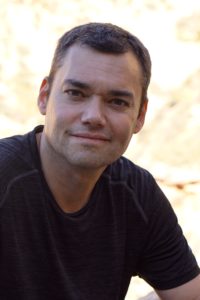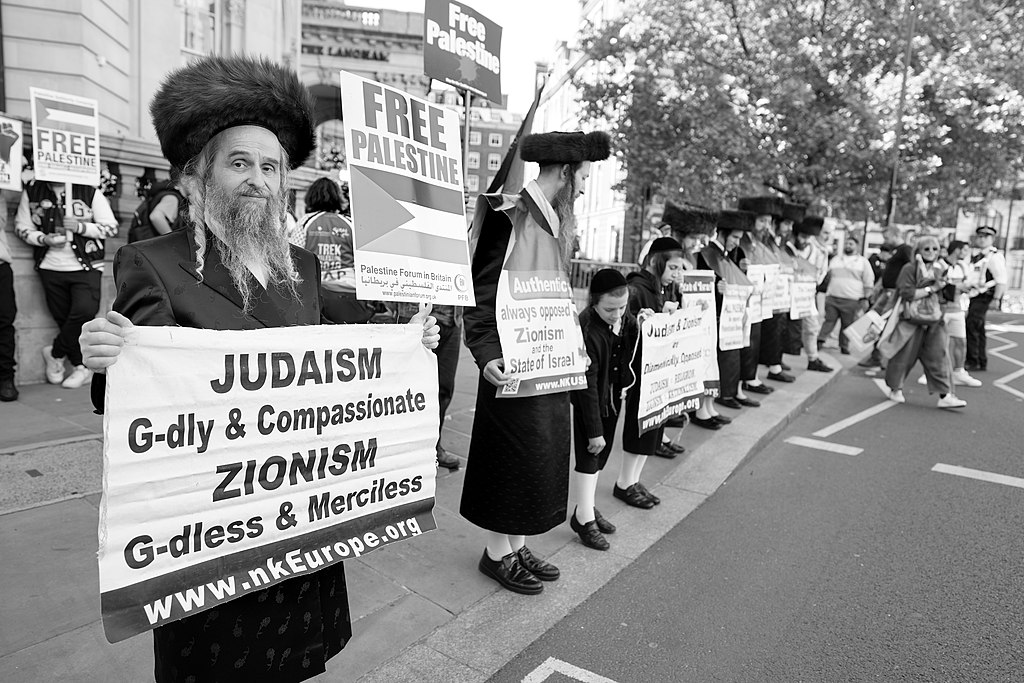 Jews, who were forced away from Israel/Palestine more than 2000 years ago, have the “right of return” automatically. They can come and instantly claim Israeli citizenship, and the government helps them resettle–even offering intensive Hebrew language instruction. But Palestinians, who were only forced off their land in 1948, have no such right–even though some of those people are still alive and no one is more than four generations into the exile. Meanwhile, in many parts of the country, Palestinians can’t get building permits from Israeli authorities. “But they still need places to live. They still have children.” So they build illegally, and when Israel wants to up the repression, the government bulldozes these houses.
Jews, who were forced away from Israel/Palestine more than 2000 years ago, have the “right of return” automatically. They can come and instantly claim Israeli citizenship, and the government helps them resettle–even offering intensive Hebrew language instruction. But Palestinians, who were only forced off their land in 1948, have no such right–even though some of those people are still alive and no one is more than four generations into the exile. Meanwhile, in many parts of the country, Palestinians can’t get building permits from Israeli authorities. “But they still need places to live. They still have children.” So they build illegally, and when Israel wants to up the repression, the government bulldozes these houses.
That inequity made CNN political commentator and journalist Peter Beinart (latest book: The Crisis of Zionism) very uncomfortable. As he struggled with the ethics of this inequality, he began learning more. Beinart is Jewish, has lived in South Africa, Israel, and the US, and is very aware of the ethical teachings in classical Judaism about treating the stranger well, doing good deeds, being a good guest when you travel to others’ lands, and treating people fairly.
Over 200 people gathered on Zoom June 8, 2021 to hear Beinart discuss the prospects for peace and justice in the Middle East in a program for Critical Connections entitled “Palestinian Rights, Jewish Responsibility.” At least five rabbis were in the room, as were large contingents from both the mainstream and progressive Jewish communities. A number of Muslims were in the audience, as well.
Originally a supporter of two separate states, Beinart now sees that as impossible because of the ways the Israeli government has carved up the West Bank into “Bantustans” with Jewish settlements separating once-contiguous Palestinian areas. Instead, he has joined many Palestinian thinkers in calling for a single multiethnic state, sharing power, with parallel more-or-less autonomous governments for internal governance within each community, and offering equality for all.
Both Israelis and Palestinians would be safer with this model–just as South Africa is safer for whites as well as blacks, and Northern Ireland is safer for both Protestants and Catholics, he says. Once the dominant group gives up its total control and need to dominate, the oppressed group starts to get less hostile because the repression has eased off.
He says the late Israeli writer Amos Oz is wrong in calling for a “divorce” between Israeli and Palestinian society. “The marriage will not be easy. But it is essential.” And just as activists in the US have begun to make land acknowledgements to the indigenous people who had the land before Europeans, “acknowledgments and apologies [for past wrongs] have great healing power.”
Beinart took many tough questions, particularly from mainstream Jews worried about the security of Israeli Jews under that scenario.
- On antisemitism from the Left: “We cannot deny that some on the Left are antisemitic–especially in recent weeks [during the exchange of bombs and rockets between Israel and Gaza]. All the Palestinian intellectuals and activists I know condemned those acts. But virtually all Palestinians will be anti-Zionist,” because Israel has dispossessed their families. It didn’t help that major Israeli statesmen made incendiary remarks. Abba Eban, for example, claimed that a return to the 1948-67 frontiers would be “Auschwitz borders.” Beinart made this distinction between antisemitism and anti-Zionism several times, and pointed out that the Palestinian statesman Edward Said was on record as appreciating the impetus behind Zionism–though not its effects on his people. Beinart also stood unequivocally against antisemitism from any source: “If Jews are being dehumanized, as Jews, we should speak up.”
- On whether either side had a right to call the other fascist: He did not feel that Palestinians should see Jews as Nazis. But he also recognizes that there is a massive power imbalance and had strong criticism for those Jews who see Palestinians as akin to the Nazis: “If you see Palestinians as Nazis, you erase the moral responsibility of power. You frame it as survival, but the issue is denial of basic rights.
- On how to negotiate in good faith: Both sides have made offers, but their offers were unacceptable to the other side. NNo matter how many offers have been tendered, they haven’t been able to reach common ground for a meaningful agreement so far.
- On the safety of Israeli Jews in a single multicultural state and the danger of falling into Lebanon-style permanent civil unrest: Growing up in South Africa, he noted there was great fear among whites about what would happen when apartheid ended and blacks took power. South Africa is only about 10 percent white, while Israel/Palestine would be much more Jewish. Jews, he said, have enough economic privilege and enough political and social organization to protect their interests. He also noted several important differences between Israel/Palestine and Lebanon: Lebanon had a weak economy, a weak government with weak restraints on executive power, low literacy, and multiple invaders (Israel and Syria).Israel/Palestine is in a much stronger position. It has much higher per capita income and literacy levels, including among Palestinians, which according to political science research is correlated with democratic stability. For Jews, it also has strong judicial, parliamentary and media institutions that check executive power—those are a foundation upon to build in a state that offers equality to Palestinians
- On whether comparisons between Israel and South Africa’s apartheid-era regime are apt. He noted that Israelis and Palestinians have vastly different experiences on a whole range of situations, from border checkpoints to land claims to obtaining various types of permits–and that numerous Israeli groups have described the occupation as apartheid. I didn’t hear him directly take a position–but he did say, “Self-determination does not mean the right for a given ethnic, religious or racial group to have a state that grants it rights that are denied to people of other ethnic, religious or racial groups in that same state.”
. And “to be stateless is to be under the power of a government but” not to have the rights afforded citizens, or to have any agency in dealing with state power.
- On why American Jews need to get involved and not see the conflict as an internal matter that only concerns Israeli Jews: US Jews have skin in the game because our government has a long history of supporting and funding even very extreme Israeli government positions.
- On how to end anti-Jewish terrorism: “You have to show that nonviolence can work. When you respond by criminalizing BDS [boycott-divestment-sanctions] and calling it antisemitic, you doom nonviolence. [PLO President Mahmoud] Abbas has cooperated on security for 15 years. When you continue building [Jewish West Bank] settlements [despite that cooperation], you strengthen Hamas.” He also praised organizations such as Encounter, that provide opportunities for Jews and Palestinians to meet in structured formats, in a society that makes meaningful contact quite difficult, noting that “Israeli media doesn’t do a good job of presenting the reality of Palestinian existence. He does see hope in social media connections, and described a Clubhouse room that attracted many perspectives and was going 24/7 during the Gaza conflict: “Many of the Israelis were exposed to the Palestinian perspective, some for the first time.” This is a bilateral problem, though; he expressed concern about an “antinormalization” movement among Palestinians..
Author’s note: I have done my best to render material within quote marks as accurately as I can, but they are from handwritten notes–and while accurate in substance and meaning, may vary from his exact words. Also, I’ve grouped comments that were thematically related; this article does not attempt to put Beinart’s remarks in the sequence they were presented.
To read or subscribe to Beinart’s blog, visit peterbeinart.substack.com
Shel Horowitz is Editor of Peace and Politics Magazine and a peace activist for over 40 years. His latest book is Guerrilla Marketing to Heal the World.







